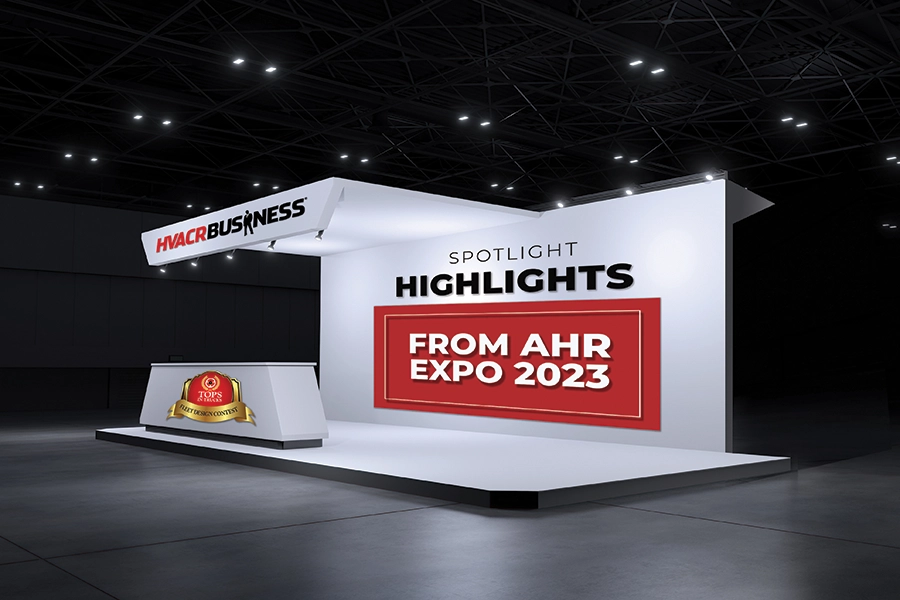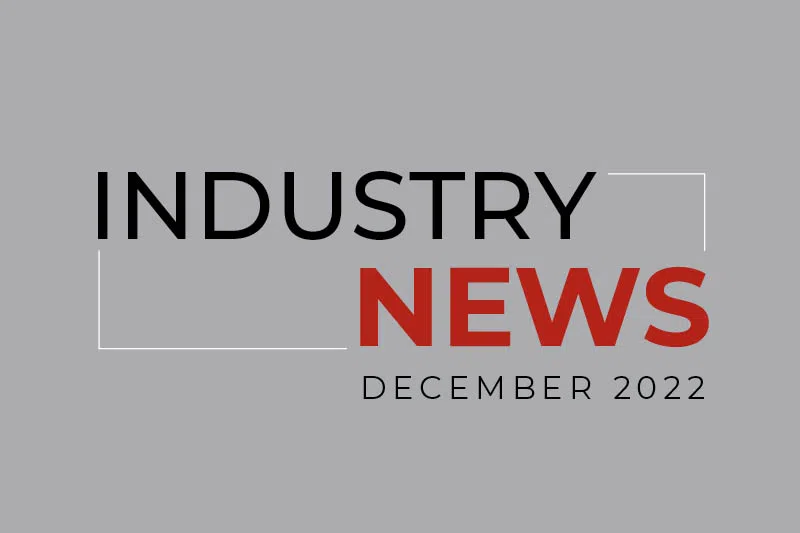Several key trends are driving the HVACR industry as we head into 2024. Each trend provides HVACR professionals with several opportunities while addressing their own set of unique challenges as well. These include regulatory changes, advances in technology, and an ever-growing focus on sustainability and electrification.
Industry professionals must understand how to best take advantage of the opportunities each trend presents. Understanding the current state of HVACR and where the industry is heading, will empower continued success in the new year and beyond.
Electrification, Decarbonization & High-Efficiency Systems
The HVACR industry has faced notable regulatory changes in 2023, but it has also been a year of significant growth and innovation. Advancements in technology and a growing focus on sustainability have enabled the production of more efficient, digitally connected solutions for both residential and commercial spaces.
The push toward decarbonization and electrification continues to accelerate, driven largely by unstable energy costs, legislation, and climate change. As a result, we’ve seen an emphasis on renewable energy sources and demand for high-efficiency HVACR systems, including the adoption of heat pumps across all sectors.
Additionally, the integration of smart technology has become an undeniable expectation for both homeowners and building managers. Controls and thermostats enhanced by the Internet of Things (IoT), connectivity, and artificial intelligence (AI) have become a mainstay, providing increased insight into system performance, energy efficiency, and customized comfort.
Customers Expect More Than Comfort
How is the industry changing? Both residential and commercial customers now expect more than comfort from their HVACR systems — they want healthy, energy-efficient homes and buildings that are aligned with environmentally responsible practices.
A shift in focus from simple comfort to IAQ and energy efficiency is driving an investment in systems and technologies that can enhance indoor air quality (IAQ) and optimize energy use. Options like zoning and smart controls are must-haves for homeowners and building managers who want to easily manage energy use and air quality improvements. Additionally, within the commercial sector, building managers are now being tasked with accessing the carbon footprint of the building and providing proof of progress toward net-zero goals. Advanced digital platforms can connect and digitally automate diverse data sets from multiple systems to optimize building performance, manage emissions, and analyze results.
Leverage Opportunities for HVACR in 2024
What opportunities lie ahead for HVACR in the coming year?
The HVACR industry operates within a complex regulatory landscape, with evolving codes and standards. Being able to understand and stay ahead of these changes while balancing consumer demands presents a huge opportunity to drive growth and industrywide sustainability.
As an industry, we can expect to see a continued emphasis on decarbonization, electrification, and renewable energy sources, which will also open up many opportunities for the HVACR industry in both product development and digitalization.
What challenges are expected for the HVACR industry?
The industry is facing back-to-back regulatory changes. DOE’s 2023 energy efficiency regulations are now closely followed by the EPA transition to low-GWP refrigerants going into effect in 2025. Distributors and contractors that have developed solid phase-in/phase-out plans have an advantage. The phase-out of high-global warming potential (GWP) refrigerants poses a significant challenge for the HVACR industry. Adapting to new refrigerants and ensuring compliance with evolving regulations can require investment in research, development, and technician training.
Hybrid System Heat Pumps are ‘Hot’
Which innovations have the potential to make the biggest impact?
With the industry’s focus on electrification and decarbonization and its extensive investment in technology, heat pumps are solidly positioned to make a huge impact. Innovation in heat pump technology is unfolding rapidly and the space is incredibly dynamic. As a result, heat pumps are being leveraged to address an increasing share of heating loads.
However, it’s important to note that most air-source heat pump systems need to include some form of backup or supplemental heat that is utilized when heating demands exceed capacity, such as when the outdoor temperatures are too cold for the heat pump to run efficiently. Hybrid systems provide a solution to maintain efficiency in very cold climates. In a hybrid system, a heat pump is connected to a high-efficiency gas furnace and can seamlessly adjust between heating sources depending on the heating demands. This will often result in lower operating costs and source emissions compared to electric resistance for space heating, but results will vary on a building-by-building basis.
Integrated Building Systems Get Smarter
Adding to the increased focus on IAQ and energy efficiency, it’s also important to understand the revolutionary impact of data and digital technologies. There is a growing demand for smart building solutions from which the HVACR industry can benefit. Integration with other building systems, such as lighting and security, offers opportunities for improved energy management, occupant comfort, and overall building performance.
Digital technologies give building operators a comprehensive suite of apps to monitor and improve energy efficiency, tenant satisfaction, asset performance, maintenance operations, space performance, and, ultimately, the comfort of all occupants. Additionally, as climate disclosures become mandatory for many building managers, digital services leverage data collection to assess the carbon footprint of the building, track progress toward decarbonization goals, and provide clear reporting on emissions and building performance.
Regulatory Changes: R-410A & A2L
What does the regulatory landscape look like?
The American Innovation and Manufacturing (AIM) Act, which mandates an 85% reduction in hydrofluorocarbon (HFC) gases by 2036, has remained top-of-mind for contractors, dealers, and manufacturers alike. The initial phase of the policy had a negligible impact on refrigerant availability, but the next phase — taking effect in January 2024 — dictates the most significant step-down to date and will reduce HFC production by 30%.
This next phase is poised to create a significant impact on the availability of common HVACR refrigerants, including R-410A. However, contractors and dealers who prepare now can minimize disruptions and the risk of stranded equipment. All involved parties must understand the safe handling, storage, and transportation of mildly flammable (A2L) refrigerants and have a plan in place for R-410A recovery and reclamation.
Ensuring all levels of the industry are educated, informed, and empowered will help make the transition as successful and seamless as possible, but it remains a pressing issue for the industry at large.
How are organizations prioritizing sustainability?
As sustainability becomes a global corporate mandate, organizations are making bold commitments to decarbonize building operations and conserve resources. In a recent study1 conducted in conjunction with Forrester Research, 2,348 business leaders were surveyed to better understand how organizations are prioritizing and investing in sustainability. The survey revealed that 80% of respondents cited implementing or maturing sustainability efforts as their top priority and, for most, 2024 was the target date for achieving these goals.
Are there other pressing issues facing HVACR right now?
Indoor air quality receives significant attention due to its impact on occupant health and well-being. Ensuring optimal IAQ requires advanced air filtration, ventilation, and air purification technologies, as well as regular maintenance and adherence to industry standards.
For many building professionals, simply enhancing or replacing the HVACR system may not be enough to bolster occupant confidence and satisfaction. Smart building technologies that utilize occupant-facing apps make building data transparently available and enable communication with facility personnel about building and room conditions such as temperature, lighting, and occupancy.
Preparing for a Successful Year
In 2024, regulatory changes, sustainability, and new technology will continue to influence the HVACR industry. HVACR professionals who understand and plan for changes while balancing consumer demands are best positioned for success. And, together, as an industry, we can move closer to a world that is built on smart, healthy, and sustainable buildings.
President of Global Residential and Light Commercial for Johnson Controls – David Budzinski is responsible for the global ducted and ductless HVAC businesses. He manages all aspects of the business and drives the growth of this global portfolio. Notably, during his 16-year tenure, he has grown the channel network exponentially and built the third-party channel organization and distribution operating model. Previously, he served as a vice president and general manager in the Digital Solutions business and before that, as the vice president of Distribution and Channels in the Middle East and Africa across controls, chillers, air systems, and DX. www.johnsoncontrols.com
1. TheRaceToDecarbonization(ForresterResearch2021) https://www.johnsoncontrols.com/-/media/jci/openblue/ forrester/forrester_ jci_study.pdf





